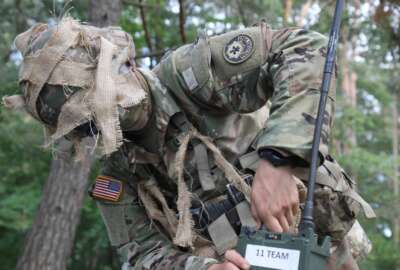

The Army expects it'll take about a year to get everyone on the virtual desktop capability.
Best listening experience is on Chrome, Firefox or Safari. Subscribe to Federal Drive’s daily audio interviews on Apple Podcasts or PodcastOne.
After about a month of testing, the Army is rolling out a new virtualized desktop capability across the force, providing soldiers and civilians with more options for accessing their work.
Army Chief Information Officer Raj Iyer said the Army is ready to go live with Microsoft’s Azure Virtual Desktop. “It’s rolling out in two weeks,” Iyer said during a Dec. 14 interview on the sidelines of the Department of Defense Intelligence Information Systems conference in San Antonio, Texas. “The infrastructure is all set and ready to go.”
The capability provides virtualized desktops and applications through the cloud, allowing users to access work on their personal laptops rather than relying on government-provided computers. Early adopters in the National Guard and Reserve have been using it for about a month.
Iyer said the aim is to find out how different pockets of the Army end up using the capability, although he said nobody will be forced to use it.
“What we want them to do is to go in and start playing with it and see how well it works for them,” he said. “Everybody’s use case for how they’re going to use it, it’s going to be different across the Army, whether you’re active duty or a civilian, you’re Army Guard, Reserve. They’re all going to be different use cases. So we want to make sure that we get everybody to go test it, see how it works for them, identify gaps, and then come back to us tell us where those gaps might be.”
Iyer said the “bulk majority” of Army users will be migrated to the virtual desktop capability by the end of 2023.
The introduction of the virtualized desktop is part of a broader push to streamline the Army’s ability to share and access data, with a heavy reliance on commercial cloud computing.
“It’s got to be where we enable our warfighters to be able to access data from any device anywhere, and this is where all of our efforts around getting to virtual desktops is so important” Iyer said during his keynote address at DoDIIS. “If the data is in the cloud, and that is where it resides, and you are able to leverage commercial transport to get to that data anywhere in the globe, then you should be able to bring any device to get access to it.”
The Army is also testing technologies that will allow soldiers and employees to use their personal mobile devices to connect with government systems. The service began piloting a Bring Your Own Device (BYOD) solution with National Guard and Reserve units last year.
And earlier this fall, the Army rolled out Google Workspace to upwards of 250,000 users.
Iyer said the Army is assessing how its employees are using the functionality of both the virtualized Army365 capability and Google Workspace tools, which can also be accessed from personal laptops.
“We need real users to go try it out, tell us what works and doesn’t work, and that’ll inform our path forward,” Iyer said. “But both solutions are here to stay in the Army. The question is, who is going to be using which pieces of it? And how do we make sure that we also have some level of resiliency, so we’re not all on one solution.”
Copyright © 2025 Federal News Network. All rights reserved. This website is not intended for users located within the European Economic Area.
Follow @jdoubledayWFED

